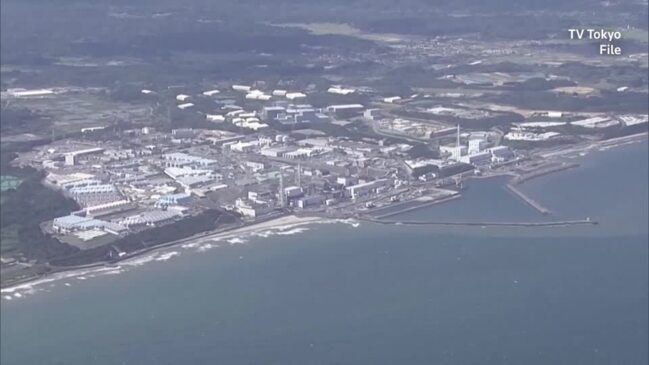Labor’s nuclear figures are incorrect, a former senior US official insists
The federal government insists nuclear is too expensive to be part of the future energy mix, but a former US government official says it could be cheaper than other sources of power.

The financial cost of using nuclear power to replace coal and assist Australia to meet its net zero carbon emissions aspirations without substantial societal upheaval is much smaller than federal Labor claims, a former senior US government official says.
Federal energy minister Chris Bowen said using nuclear as, proposed by Opposition Leader Peter Dutton, would cost $387bn, but Westinghouse senior vice-president Rita Baranwal – a former assistant secretary for nuclear energy at the US Department of Energy – said the figures were incorrect and misleading.
“I only have three engineering degrees and that math doesn’t make sense to me,” Ms
Baranwal told The Australian Financial Review Energy & Climate Summit.
Ms Baranwal said Westinghouse’s own small modular reactor cost about US$1bn ($1.58bn) for a 300MW facility, which would be used to supplement renewable energy as a baseload generator.
Factoring in additional costs for transmission upgrades, nuclear power could be a significant contributor to supporting renewables for far less than $387bn, Ms Baranwal said.
Mr Bowen, using analysis from the Commonwealth Scientific and Industrial Research Organisation (CSIRO), said nuclear power would cost approximately $6896 per kilowatt-hour.
Ms Baranwal’s comments are likely to reinvigorate the Coalition’s attack on Labor. It could also stoke anxiety within Australia’s energy industry which fears a muddying of government policy as billions of dollars of investment decisions have been predicated on the country having renewable energy generate more than 80 per cent of the country’s electricity by 2030.
Australia is struggling to develop sufficient renewable energy sources to back up vast amounts of solar and wind generation which has been earmarked to replace the capacity of coal.
Energy experts said Australia must move to rapidly expand development of large-scale batteries and pumped hydro, or the country would be susceptible to price surges and even blackouts during periods when the sun is not shining or the wind is not blowing – so-called renewable energy droughts.
Coal-fired power stations, which still provide more than 60 per cent of Australia’s electricity, generate throughout the day. But the country’s energy market operator expects two thirds of the traditional generators to have been retired in the next 10 years, leaving the country scrambling to seek new sources of power.
A rapid exit of coal is likely to reshape many coal communities where the fossil fuel has been the major employer.
Undercutting the nuclear advocacy, however, Ms Baranwal said that even if work began immediately to install a small modular reactor at coal sites set for closure, it would still take a decade before electricity would be generated.
Before any work could begin, Australia would need to change the law and this would likely stoke a fierce debate that would drag on.
Ms Baranwal said the decade-long timetable was largely driven by regulatory restrictions. She defended the safety record of the fuel source and rejected concerns about substantial nuclear waste issues.
Much of Australia’s so-called renewable energy storage woes could be eradicated if the eagerly anticipated Snowy Hydro 2.0 project were completed on schedule.
The 2000-megawatt pumped hydro storage project in NSW is a key pillar of Australia’s plan to wean its $2.5 trillion economy off fossil fuels, but it has been beset by delays and cost blowouts.
But Australia is increasingly dependent on Snowy Hydro 2.0, which is so large that once complete it would be able to provide enough electricity to run large swathes of the grid on its own for about a week.
Snowy is now expected to be online in 2028, but it is pushing at the boundaries of technological feasibility and energy industry executives fear further delays.
Australia’s energy grid faces substantial change by 2028 as major generators such as Origin Energy’s Eraring coal power station and AGL Energy’s Yallourn coal generator are likely to be out of the system.
Gas could be used as a so-called peaker, with generators fired up when there are renewable energy droughts. But Australia faces a looming eastern seaboard shortage and efforts to establish new supplies are struggling to win community and regulatory support, while opponents have won a spate of legal rulings designed to inhibit new developments.
Australia is one of the world’s largest LNG exporters and could be forced to ship gas from the west coast or NT, though such import terminals remain uneconomical at present.








To join the conversation, please log in. Don't have an account? Register
Join the conversation, you are commenting as Logout